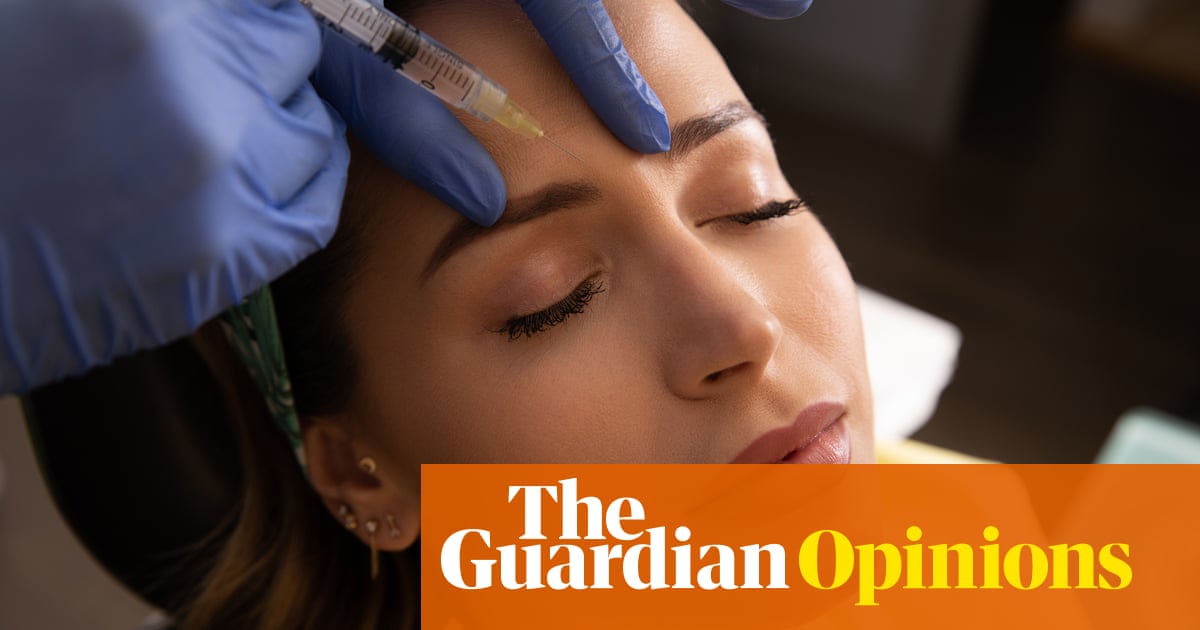
A leading cosmetic doctor known as the “king of Botox” claims young people have “lost the plot” by overdoing treatments in an attempt to recreate filtered social media aesthetics in real life. He also criticised colleagues, some of whom he said have had so much work done he no longer recognises them, for fuelling the trend.
While Botox and fillers were once most popular among older patients seeking discreet anti-ageing solutions, Dr Michael Prager said that a “visibly enhanced” look had become a fashion trend among under-30s who wanted the work to show.
The doctor, who has a clinic in Knightsbridge, London, said there was no longer a stigma in dramatically changing their appearance, with young people viewing physical changes as a “status symbol” tantamount to wearing a designer label. “Generally, anybody under 30 has basically lost the plot,” Prager, 54, said. “They haven’t spent enough time in the playground and they grew up with thumbs in a crooked position in front of a screen and now that’s their life.”
The all-party parliamentary group (APPG) on beauty, aesthetics and wellbeing said last year the non-surgical cosmetic treatment industry had undergone “rapid growth”. An estimated 900,000 Botox injections are carried out in the UK each year.
Dr Tamara Griffiths, of the British Association of Dermatologists, said there has been “real concern” about the growing numbers of children and teenagers getting Botox-style and dermal filler injections.
Last year these cosmetic treatments became illegal for under-18s and this year the government announced a national licensing scheme. But the Labour MP Carolyn Harris, co-chair of the APPG, said the government needed to do more to improve the industry and protect young people, and that they are still waiting for regulations to be brought forward.
The Department of Health and Social Care said an amendment to the Health and Care Act 2022 would give the government powers to bring a national licensing scheme for non-surgical cosmetic procedures into force in England. “This scheme will make it an offence for anyone in England to carry out specified non-surgical procedures without a licence,” a spokesperson said.
Social media and celebrities, particularly the Kardashians, have played a key role in changing attitudes to cosmetic alterations from being a secret to hide to an openly proud choice. On the TV show Love Island, “tweakments” such as Botox and fillers are popular among its 20-something contestants.
Kylie Jenner, 25, has talked about using lip fillers; Kim Kardashian, 42, has spoken about using Botox and laser treatments; in 2016, Khloé Kardashian, 38, said plastic surgery should be viewed like makeup. The three sisters have almost 100m Instagram followers between them.
Supermodel Bella Hadid, 26, who has more than 56m Instagram followers, said she had a nose job at 14. The actor Olivia Colman, 48, has said she loved the effects of Botox.
It’s also gaining traction among men. Former Disney star and singer Joe Jonas, 33, recently appeared in an advert for Botox rival Xeomin.
Young people are, Prager claimed, “being overly injected and proud of it”. While many of the practitioners doing the treatments have “injected themselves to a point where in the old world they would have been considered nuts”.
A rise in body dysmorphia disorder (BDD), among practitioners and patients, was fuelling the trend, he said. Such was the transformation that some practitioners had become unrecognisable. “I’ve known some of these people for 20 years,” he said.
Dr Darren McKeown, a British College of Aesthetic Medicine (BCAM) board member who has studied the psychological outcomes of cosmetic interventions, said BDD was “relatively common” among such patients. He said it could be present in up to 10% of those seeking treatment, with up to 80% of BDD patients dissatisfied with the outcome.
So far this year, 8% of BCAM member patients were aged 18 to 24, with the majority aged between 35 and 60. They performed 282,960 filler procedures last year – a 100% rise on the previous 12 months. The increased number of cosmetic treatments among young people are largely taking place in unregulated beauty salons by unqualified practitioners, said McKeown, who is concerned about the “prolific use of dermal fillers” in this group.
“A lot of people would like to have their own screen filter version to actually resemble what they see in the mirror,” said Prager, who has appeared on the TV show 10 Years Younger. “I think that’s what they’re after.”
While the trend was “neither condemnable nor applaudable”, he said, the gulf between self-perception and reality was widening. “What they perceive of themselves no longer resembles what we look at.”
While momentum for more overt cosmetic alterations has been building for some time, lockdown had a huge effect, encouraging comparisons with others during unflattering Zoom calls and affecting people’s mental health. “I now see visibly enhanced modified people on television, that it’s no longer a stigma. It’s actually a fashion trend, like tattoos.”
In the past, he said, the dominant desired aesthetic for those seeking cosmetic alterations was to “look halfway normal”. But now, he added: “It’s almost a status symbol to show that work has been done. There is no longer the need to hide it, in actual fact it’s more of a designer label.”
It was particularly popular with younger patients, he said, who had been “thrown off the rails” by Covid lockdowns.
Younger people on a budget could be vulnerable to badly done fillers, he said, and driven to use backstreet practitioners. “Yes, they’re being pushed into something, but what are you going to do? Tell them ‘no don’t do it’?”
Recalling the “Paris lip” of the late 90s and the “Jessica Rabbit” look of the 2000s, he said the move towards radical transformation was not something that should be changed by stricter regulation. “Change is to come in many different ways, but it’s ultimately inside your head.”
The sector had changed so much that he no longer wanted to be associated with it. “The cosmetic industry, it’s gone beyond.”
Prager said he was not bothered by people’s personal choices, but irritated by how trends changed the way his profession was viewed, making it “very difficult to be taken seriously as a cosmetic medical practitioner”.
He would “still hold a candle for Botox”, he said. “Overall, it’s a fantastic medical useful treatment. The same applies to fillers. It has a huge amount of benefits.”
But, Prager warned, administration is key. “You have to be careful who sits at the other end of the needle.”












